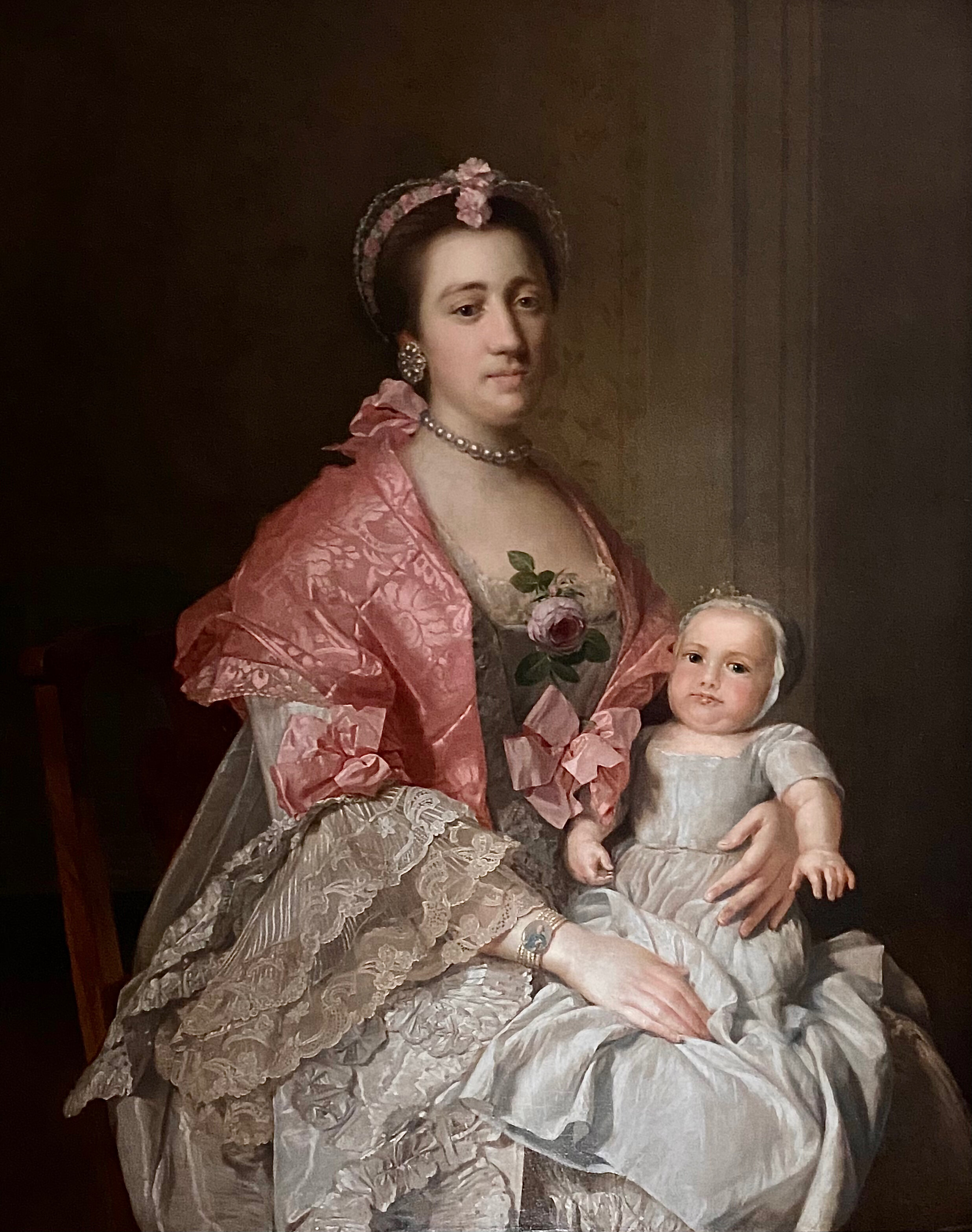
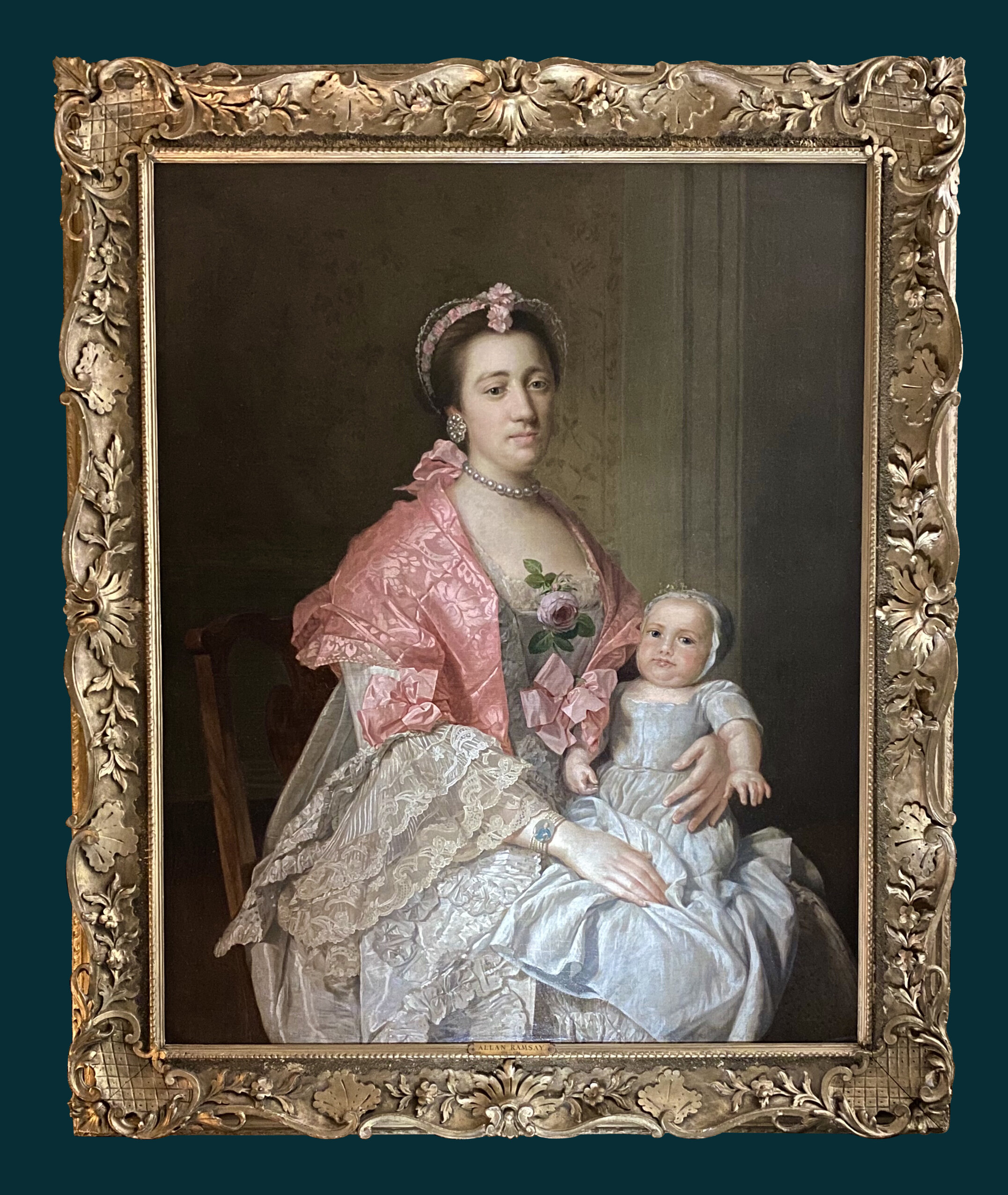
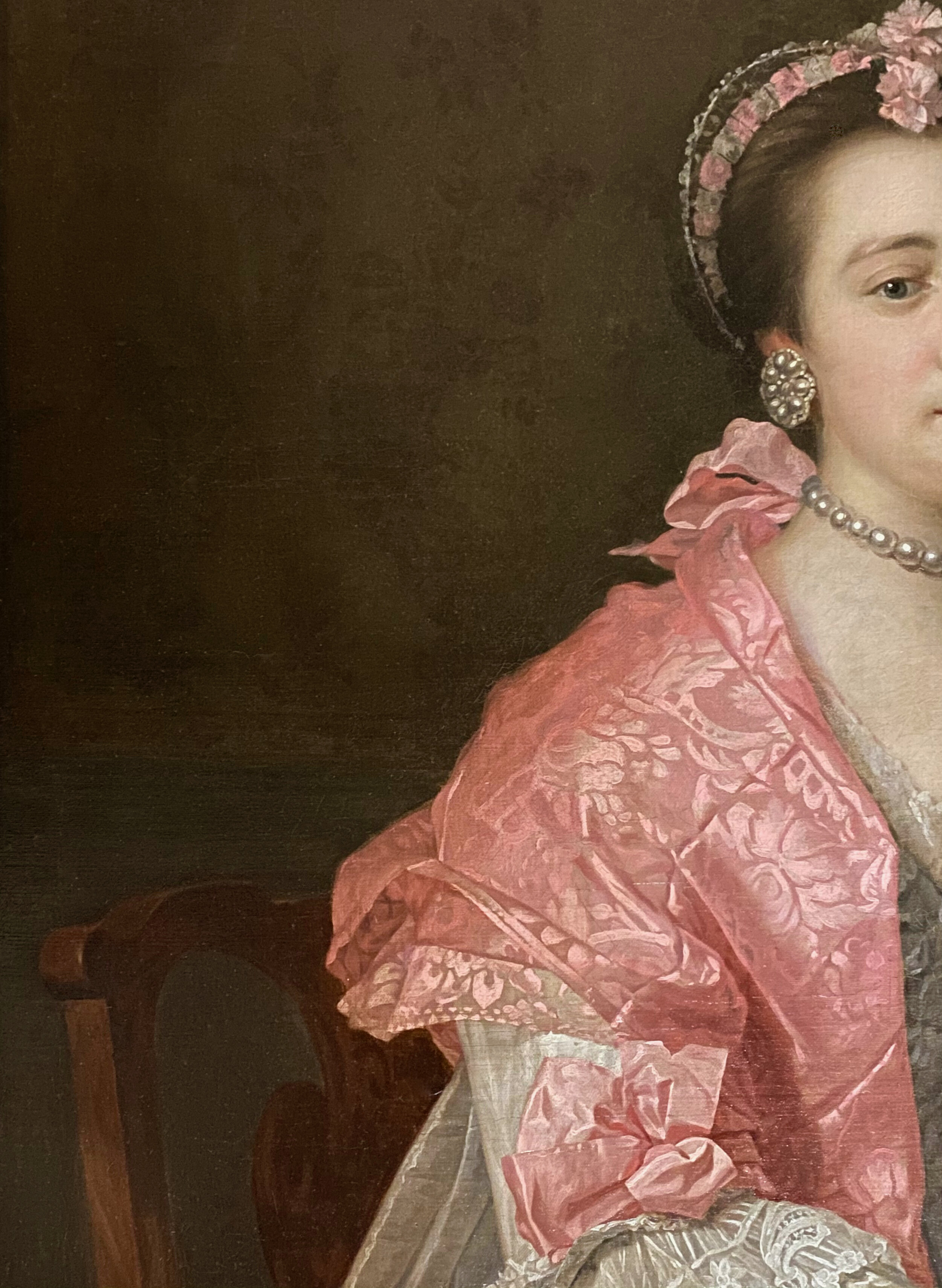
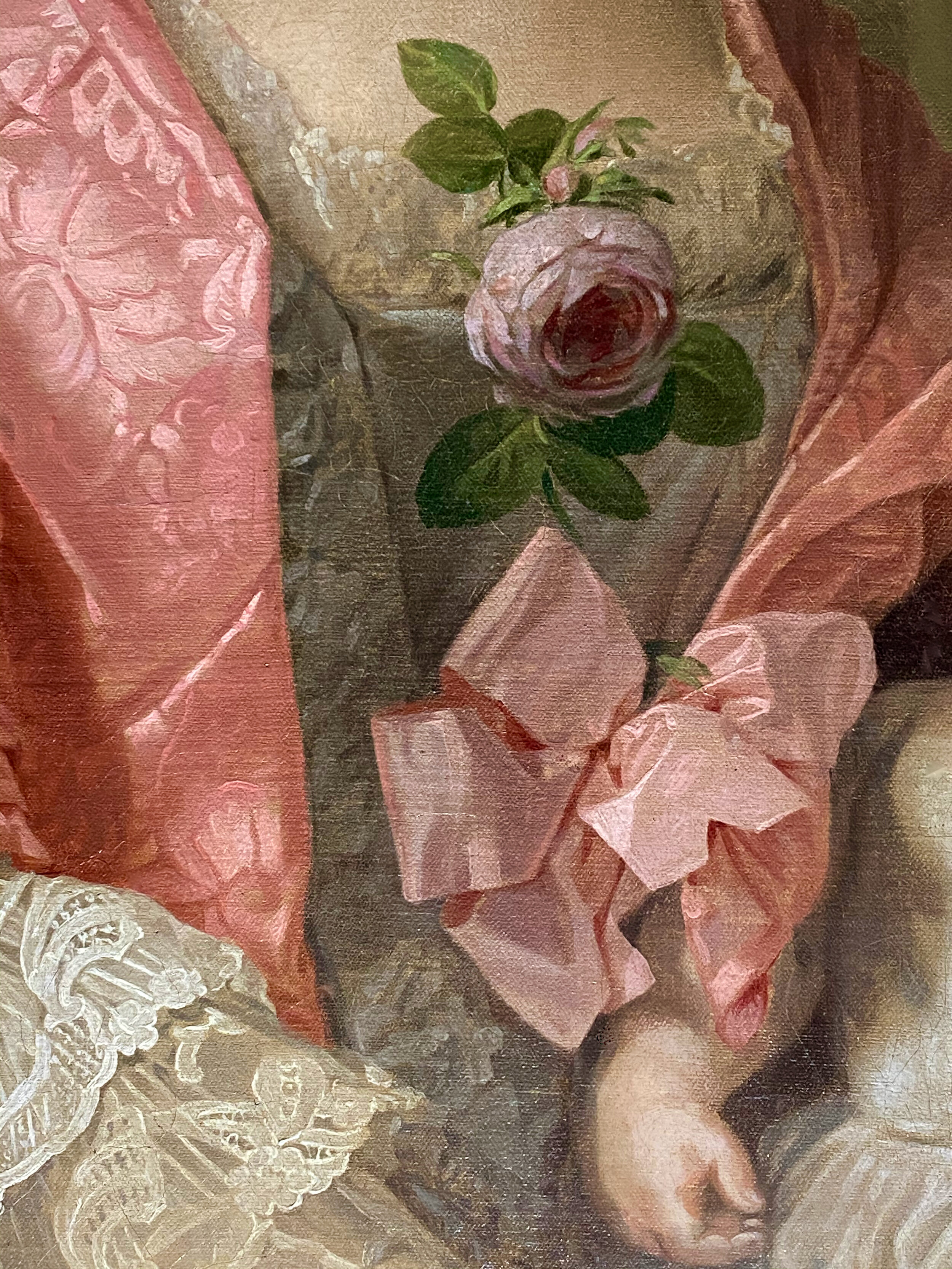
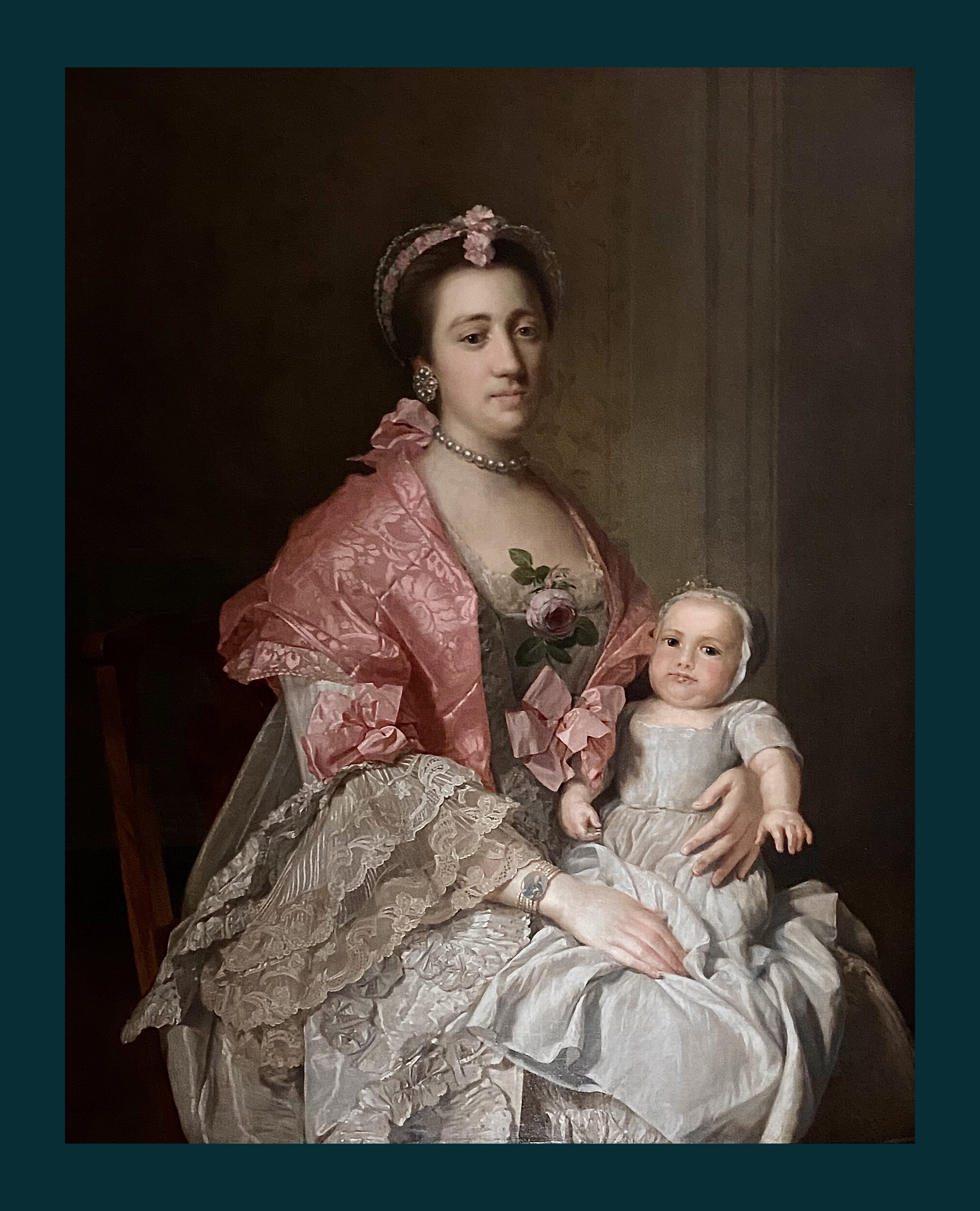
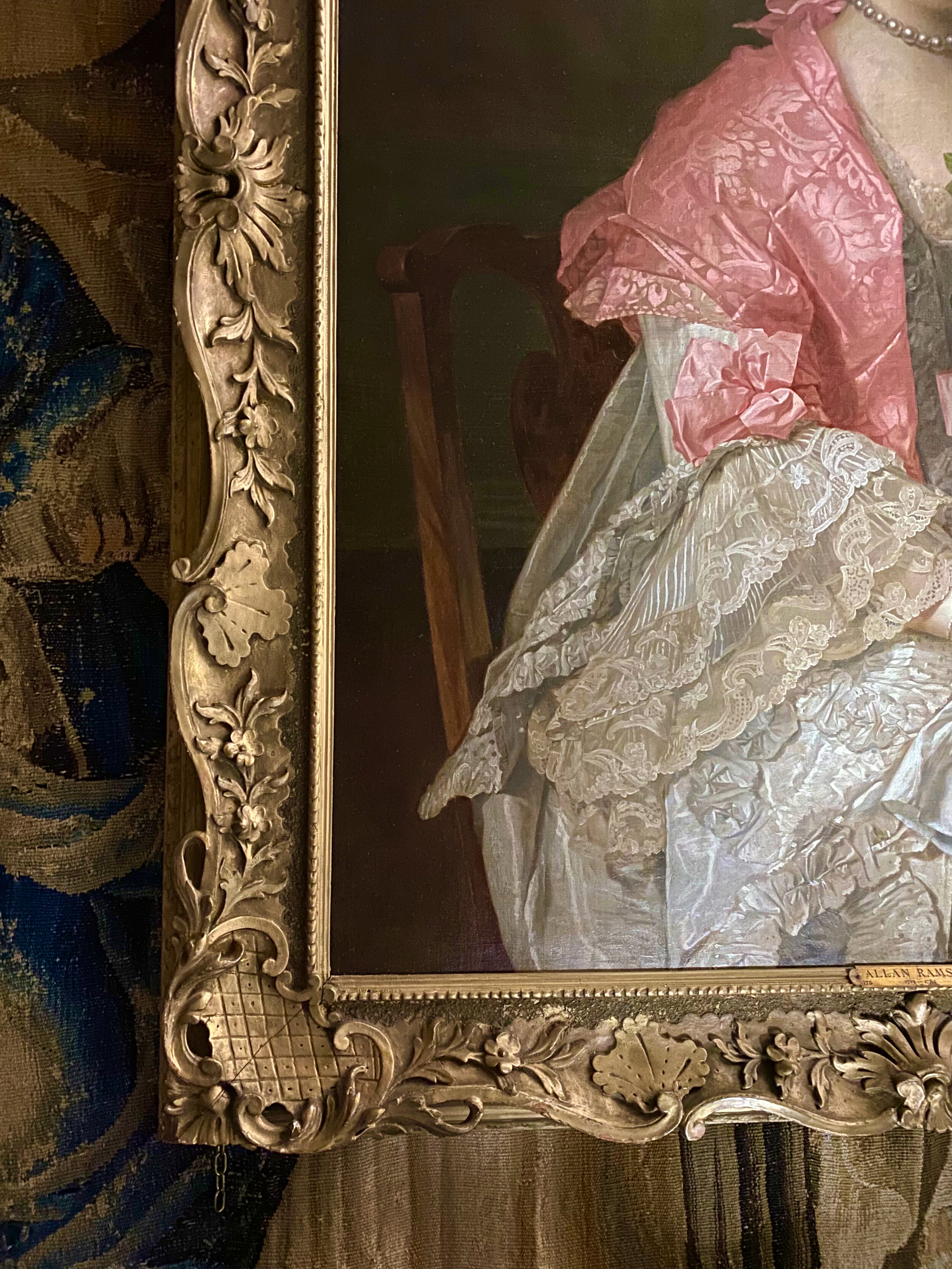
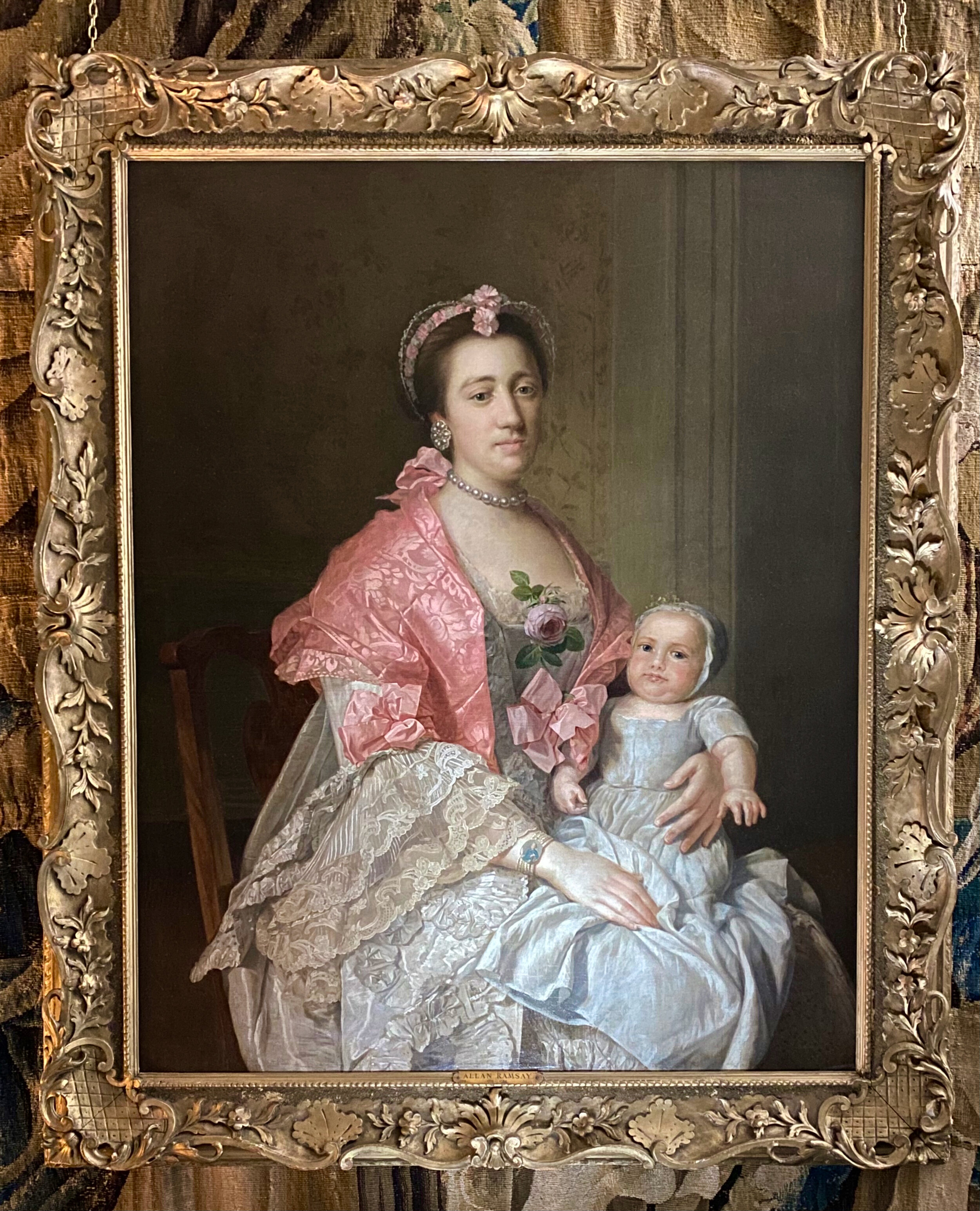
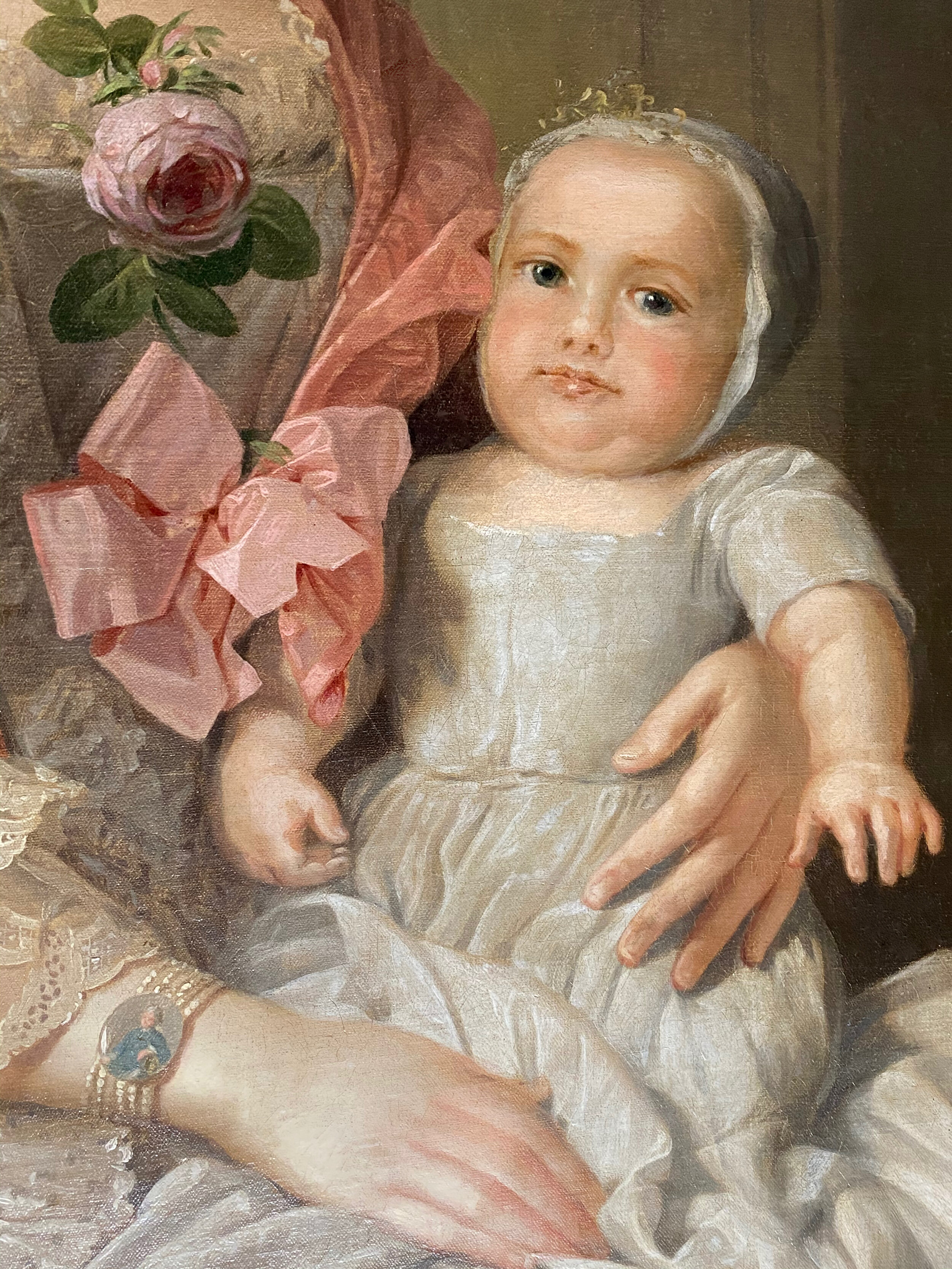
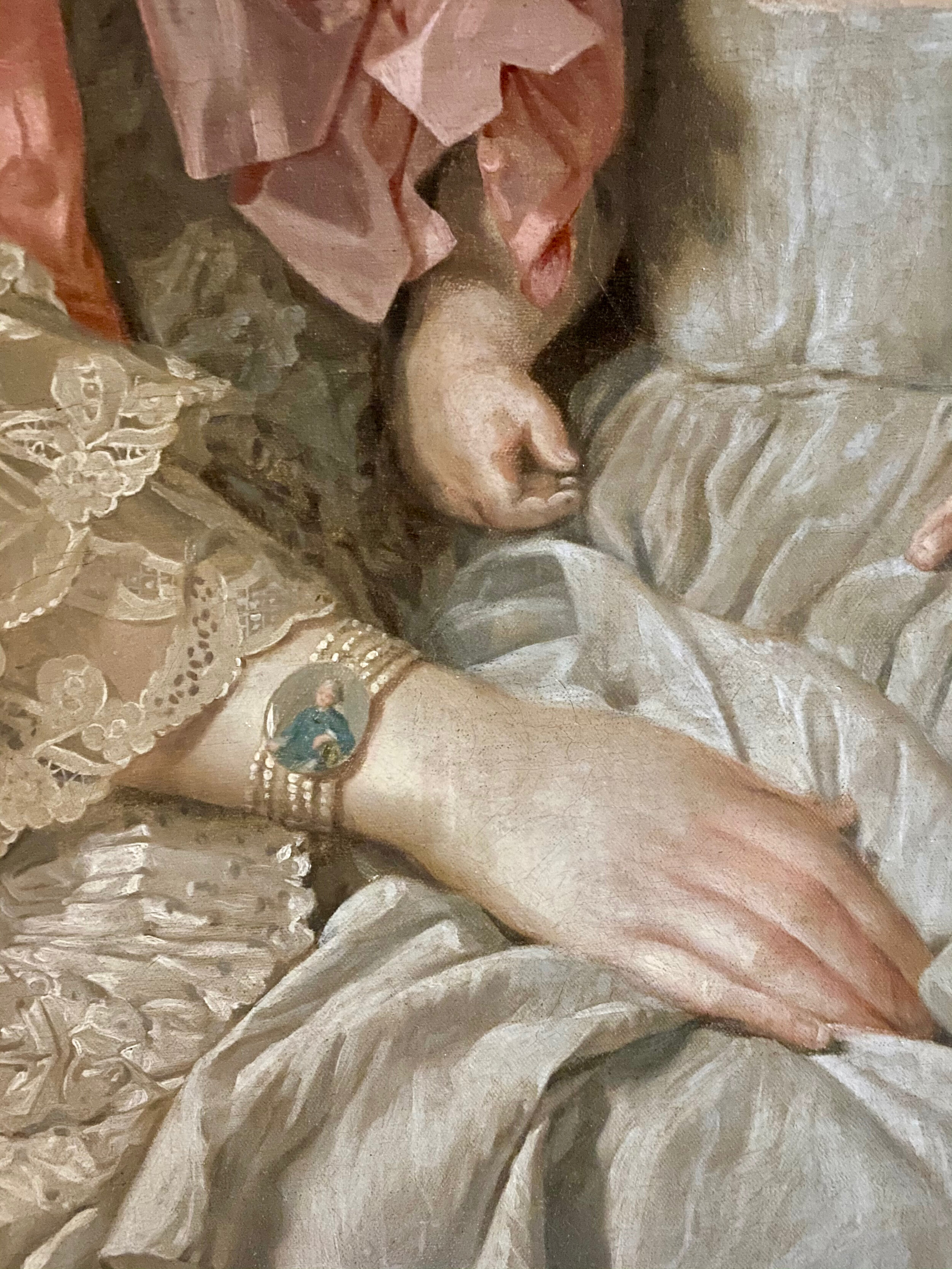
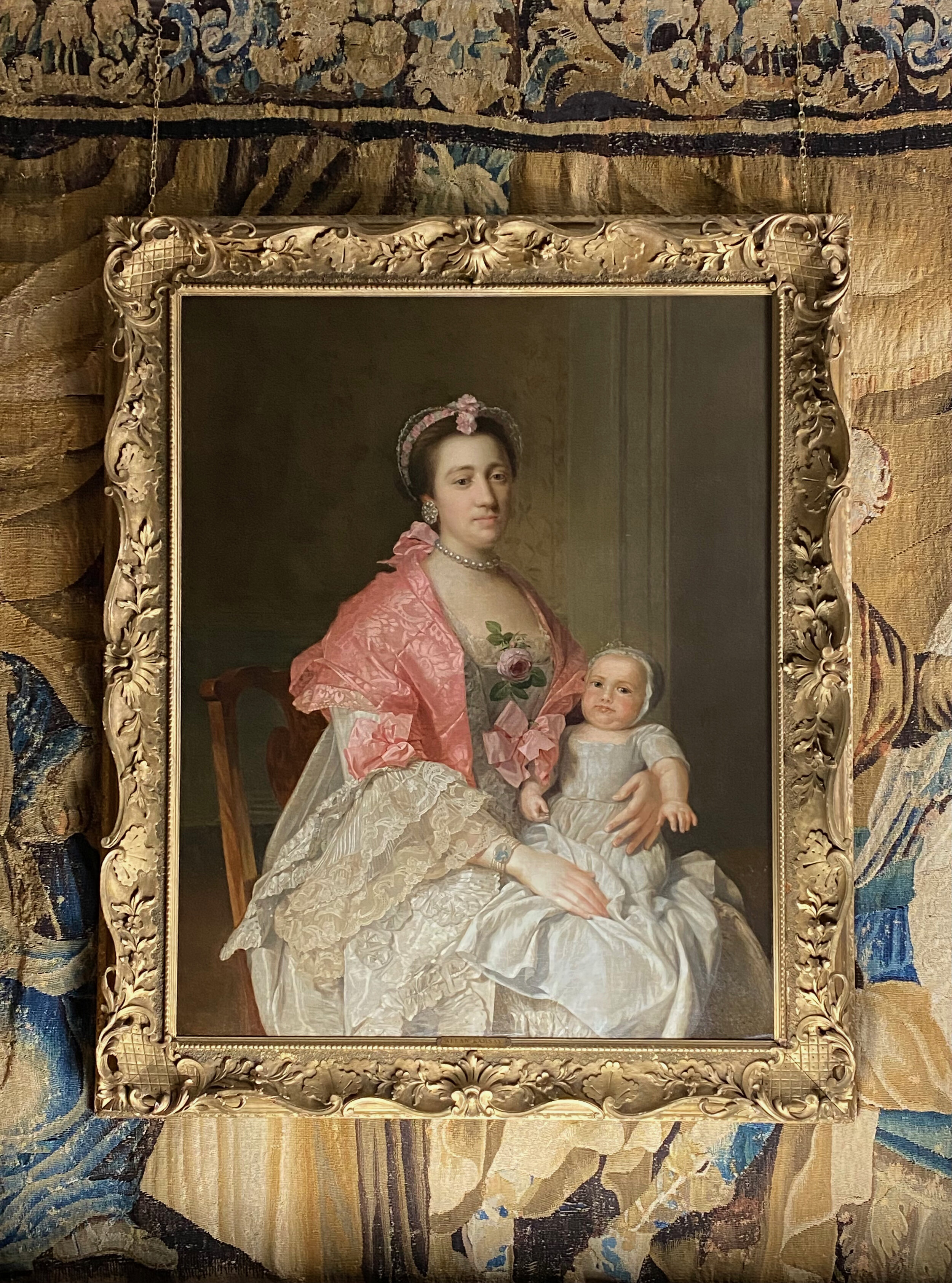
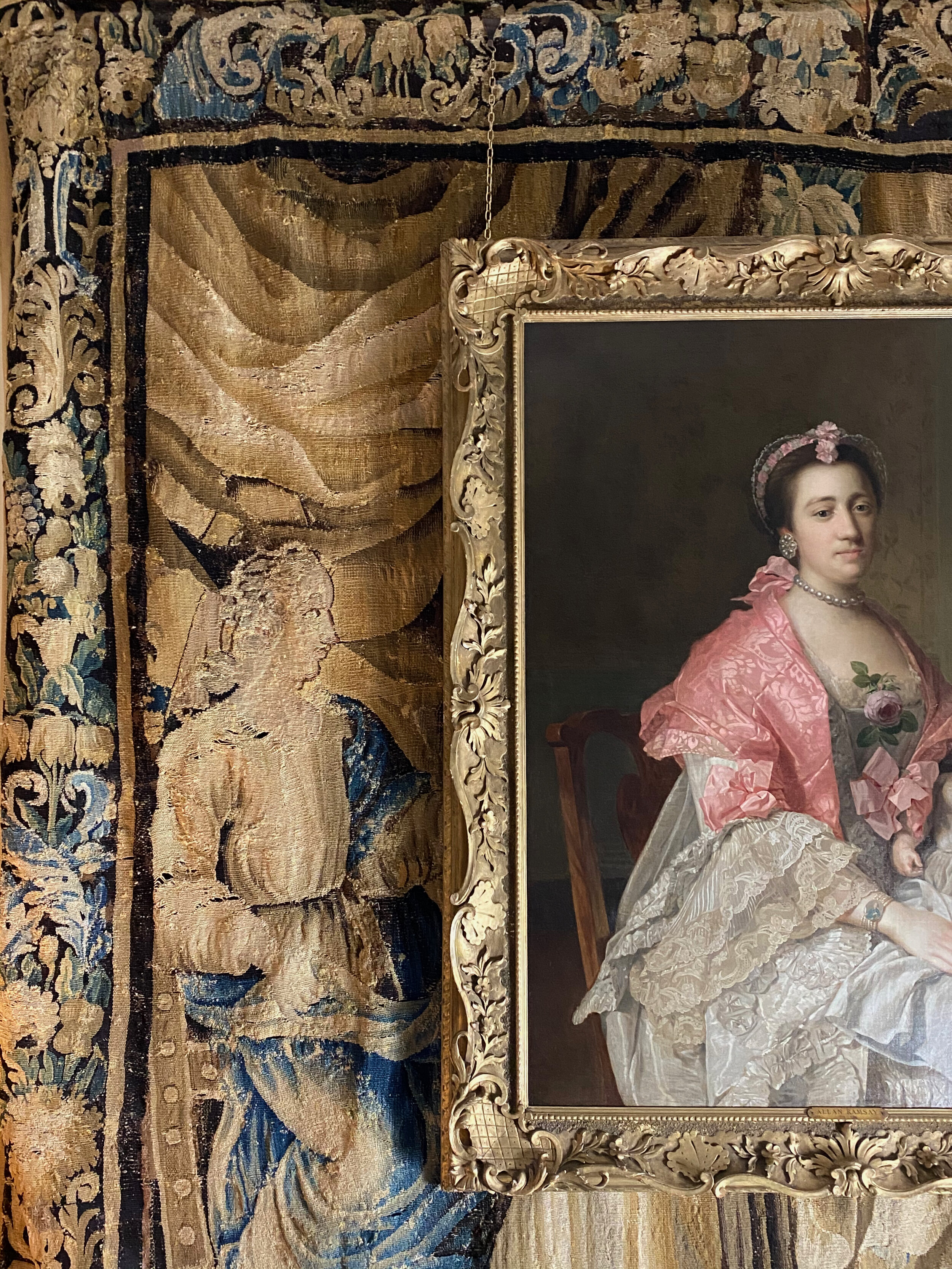
PORTRAIT OF A LADY AND HER CHILD c.1760 - BRITISH SCHOOL, STUDIO OF SIR ALLAN RAMSAY (1713-1784)
A particularly fine quality, 18th century English portrait of a beauty and her baby by an artist in the studio of Sir Allan Ramsay. The attractive and elaborately dressed sitter is seated three-quarter length within an interior, she nurses a baby upon her knee. This evocative portrayal of a mothers love is in an excellent state of conservation and is ready to hang an enjoy in its original elaborately carved swept frame with floral cartouches and sanded slip.
The sitter is dressed in the frothy frills and soft pastel colours which typify the Rococo style. The foundation of her outfit is a silvery gown with a loose pleated back of the French ‘Saque-back’ style. Also called a ‘Watteau Pleat’ – after the work of the famous Rococo master – the wide fold of fabric falling free from her shoulders can be glimpsed as it passes in front of the vase-shaped splat of her Chippendale-style chair. Her gown is similar to that worn by Ann Ford in the famous portrait by Gainsborough from 1760 – which is embellished (as is this one) by narrow strips of fabric that are gently gathered and sewn in meandering curves over its surface. The ruched robings (fabric strips) that edge her gown can be glimpsed descending in a V-shape from breast to waist as the gown is pinned to the stomacher. These are matched by horizontal bands of curvilinear form that embellish the skirt and can be glimpsed as the light falls on her lap and reveals the complex sheen and texture of the silk fabric.
The pearly white of the gown – and of the lady’s complexion - is set off by the string of pearls that encircle her neck. These are matched by large clip-on earrings of flat, round style – known as ‘snaps’ – which are embellished with beautifully-matched pearls (surrounded by seed pearls) in a stylised flower form. Similar earrings are worn by many of Gainsborough’s female sitters from the late 1750s to mid 1760s (see his portrait of Lady Mostyn from 1759 for comparison). We can see the large pink bow that fastens the string of pearls around our sitter’s neck, peeping out from behind her. Similarly lavish pink ribbon bows adorn her stomacher, and elbow, providing a fresh, feminine (and fashionable) contrast with the white gown.
At her elbow we see a frilled cuff (typical of the 1750s and 1760s – in contrast to the stiff ‘wing’ cuff that preceded it). The layers of lace that cascade from the cuff are termed ‘engageants’ – and are an expensive and showy status symbol. Like the sacque-backed dress they are a fashion imported from France (see them in Boucher’s 1759 portrait of Madame de Pompadour from the Wallace Collection for example). The pretty pink rose pinned at the centre of the breast is a typical feature of female fashion c1760 and was possibly scented. The winged cap that adorns this lady’s head is also a typical accessory for indoor wear. The emphasis on the width of the head and hair, rather than the height, denotes a dating for this portrait of early to mid 1760s (as after that hair began a rise from the crown, and would reach preposterous hights by the late 1770s).
To set off the pink details with which her dress is bedecked she wears a pink damask garment over her shoulders. This is triangular in form and generally called a ‘fichu’. These were often made of delicate lace but this example is sturdier – perhaps warmer – but ostentatious none the less.
At this date in time (and at this child’s age) it is very difficult to tell the difference between girls and boys, however we do know that the child has been angled in such a way to be shown off at full advantage – a celebration of her fertility and success in perpetuating her husband’s lineage. The angle of the sitters arm not only shows off her lovely lace, but also a portrait miniature on her wrist – that must surely show her husband? The distinctive side curls either side of his head also indicate a date in the early 1760s for this portrait.
Thank you to Jacqui Ansell (Senior Lecturer Christies Education) for this invaluable insight into costume of this period.
I am also grateful to British art specialist Brian Allen for examining the present work through high resolution photographs and generously sharing the following thoughts on its authorship: ‘Although the drapery painting is close to Ramsay's work of the mid-1750s and early 1760s, it is rather tighter and more polished than Ramsay's work becomes after the death in 1749 of his most prolific drapery painter, Joseph Van Aken. The sitters face perhaps lacks a little of the subtlety that one would sees in works by Ramsay of this date. That said, whoever painted this work must have been very familiar with Ramsay and begs the question who did paint it? His most talented pupil was David Martin (1737-1797) but although Martin travelled to Italy with Ramsay in the mid-50s, he didn't join Ramsay's studio until the early 1760s. It is just possible that this work could be by Martin.’
Higher resolution images on request. Worldwide shipping available.
Canvas: 30” x 41" / 76m x 104cm. Frame: 37.5" x 48" / 95cm x 122cm.
Internal Ref: 00104
Price: £18,000

